Smart grid creates a whole new level of expectation for the power utilities. In the past, the power grid’s only requirement was to deliver power in sufficient quantity that end users – both consumer and commercial – could operate their HVAC systems, appliances, machines and lights when and as long as they desired. Alternative power generation, two-way communication between users and utilities, and increased use of security and surveillance equipment have all contributed to the data stream that is predicted to reach 75,200 terabytes by 2015.
Increased data traffic, and particularly increased data traffic regarding critical information, requires the higher reliability information networks that are now a part of many, if not all, power utility operations. At the core of power utility information networks are:
- industrially-hardened Ethernet switches and routers
- network management software that provides visibility into the network and redundancy schemes that support rapid recovery for network failures and cyber security
- security devices such as hardwired firewalls
- cables and connectors built to withstand the wear, tear, and noise prevalent in facilities such as substations and as a part of deployment over long distances
- secure, reliable wireless connectivity to support AMR and remote access in terrains that do not lend themselves physically or economically to wired connectivity
The New Power Grid
Figure 1 provides a simplified illustration of the power grid information infrastructure. There are multiple assumptions that can be made:
- It is easy to see that Internet Protocol (IP) technology is a key enabler of the smart grid because it is standards-based, flexible, and scalable.
- Hardened switches and routers that can stand up to the demands of the power grid need to adapt to the demands for increased data by supporting greater throughput and also by assisting in intelligent bandwidth-protective routing of information through protocols such as Internet Group Management Protocol (IGMP).
- New software applications and protocols that support security, optimize routing, and simplify and streamline data management need to be developed. To make smart grid work, it will be necessary to automate much of the managing, analyzing, and visualizing of all that data – allowing humans to deal with the exceptions, not the minutia.
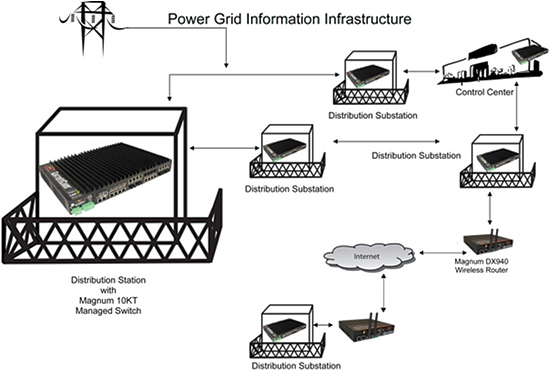
Figure 1: Power grid components are connected in a classic ring structure with single feed spurs
The Search for Zero Failover Performance
One challenge has remained, however, and that is the ability to provide zero failover in the instance of a network failure. Over the years, redundancy protocols have been developed that have significantly reduced the failover time for network failures. The graph in Figure 2 shows details on a number of redundancy protocols, and the rapid decline in typical reconfiguration time of protocols developed this century. Each reduction in failover time meant reduced risk when deploying Ethernet-based data networks in power utility applications.
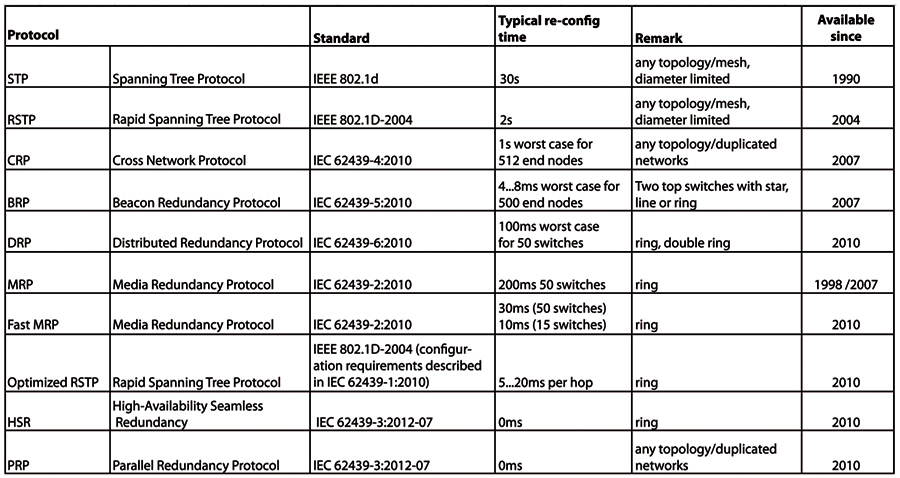
Figure 2: The above chart shows the evolution of redundancy protocols and the progress over the last 20 years that has
led to the reliable zero failover performance necessary for many industrial applications, including much of the smart grid
(click to enlarge)
Parallel Redundancy Protocol
Parallel Redundancy Protocol (PRP), first available in 2008, and High-availability Seamless Redundancy (HSR), announced in 2010, were the first IEC standard redundancy protocols to provide failover times of 0 ms network failures. Together they offer a new level of reliability for environments such as electricity distribution and security where uninterrupted data communications in environments are a requirement.
PRP uses two separate LAN networks that simultaneously send copies of each frame of data from the originating node to the destination node (collectively, end nodes). The end nodes must be dedicated switches, while other switches in the network remain unaware of the operation of the protocol. The dedicated switches, or end nodes, are called Double Attached Nodes (DANs); the other switches in the network are standard single-network-interface nodes or Single Attached Nodes (SANs). An important characteristic of a PRP implementation is that the two networks involved can have identical topologies, or they can have different topologies and/or different performance characteristics.
Whichever frame reaches the destination node first is accepted and the second discarded, based on interpretation of coding within each frame. As long as one of the LANs is operational, each frame sent would reach its destination, thus zero-time recovery is achieved. To make the system work, each node in PRP has to have two Ethernet interfaces with the same MAC address and present the same IP address. As a layer 2 redundancy protocol, PRP does not require modification in network protocols at layer 3 or greater.
Non-PRP nodes and SANs are attached to a single network and are only able to communicate with other nodes in the same network – or through a Redundancy Box (RedBox).
High-Availability Seamless Redundancy
HSR is a second redundancy protocol standardized in IEC 62439-3. It has been selected as one of the redundancy protocols named in IEC 61850 for use in substation automation. Much like PRP, HSR networks require a source node to send identical frames over two ports simultaneously to a destination port, however, HSR networks are restricted to a ring topology. Unlike PRP, HSR uses DANs that are connected to each other without the requirement of dedicated Ethernet switches. It is important to note that available network bandwidth is halved, because two frames, instead of one, are transmitted over the ring. In addition, every node in the ring must be an HSR-capable switching end node.
A HSR node receiving a unicast frame with its own MAC address as destination passes the frame to its application layers and discards the duplicate. It will forward a frame recognized as multicast (or broadcast) for further transmission, after uploading its own copy to upper layers. When the frame completes the circuit of the ring, the sender node removes the packet from the ring.
Although HSR uses a ring topology, redundant connections to other networks are possible, as will be illustrated below.
IEC 62439-3:2012-07 – A Turning Point
The original PRP definition, IEC 62439-3:2010, was later amended to align PRP with the HSR protocol. The new version of the standard adopted this year, IEC 62439-3:2012-07, includes descriptions of both HSR and PRP. The alignment of the two protocols makes it easier to implement multi-protocol nodes, including the ability to create a redundant transition between HSR and PRP networks.
Only in the case of multiple simultaneous failures – i.e. both networks (for PRP) or more than one failure in the ring (for HSR) – will there be the possibility of a communications failure.
Application Examples
Figure 3 shows a simple PRP deployment. Recall that PRP is capable of operating with any type of topology. The standard LAN can consist of just a line or additional redundancy technology, such as RSTP or MRP. SANs, which do not require zero-failover levels of responsiveness, attach only to a single DAN and are not a part of the PRP network. This type of deployment might be used to connect two substations using PRP, while non-critical devices within each substation are outside of the zero-failover zone.
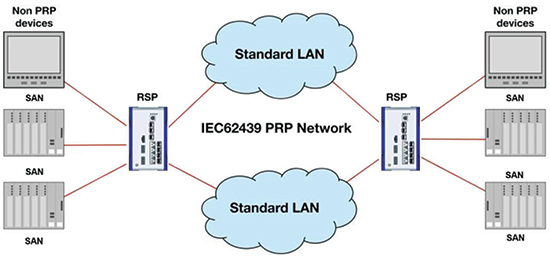
Figure 3: PRP provides zero failover and no packet loss for critical traffic such as ‘transfer trip,’
‘mirrored bits,’ and ‘synchrophasor’ real-time measurements
Figure 4 shows a more complex version of a PRP network that includes duplicated transmission via a wireless connection and through a PRP network.
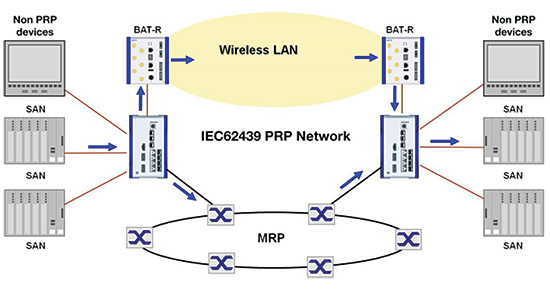
Figure 4: A wireless component may be added to a PRP network while still providing for 0 ms failover and no packet loss
Figure 5 illustrates an HSR application linking a number of substations in a redundant ring. Note that a RedBox is attached to one node on the right to provide access to SANs existing beyond the HSR environment. One set of information packets circulates counter-clockwise (red arrows) while the other set runs clockwise (green arrows). If a packet gets lost due to a cable break or other transmission failure, the second packet will reach its destination without any delay.
An added component in this example is the possibility that instrumentation within some of the substations may use board-level embedded Ethernet switches rather than installing separate switch boxes.
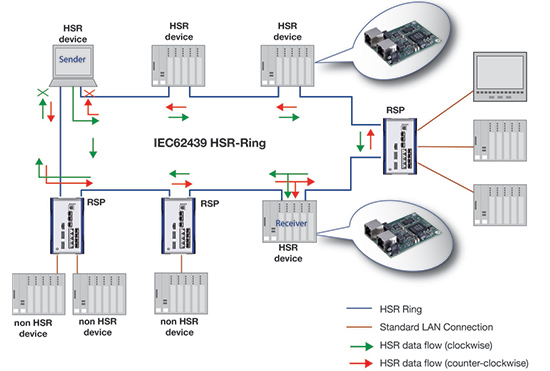
Figure 5: HSR provides the required <4ms timing plus zero failover for quantities of substations networked in a redundant ring
Summary
There is no single ‘right’ way to implement a smart grid. Solutions are as disparate as the types of utilities and the regions in which they operate. A municipally-owned utility in the Northwest, a public/private collaborative venture in the Southwestern desert, and a rural cooperative in the mountains of Appalachia will all have different operational challenges as well as differing political and financial considerations.
Nonetheless, PRP and HSR offer a new level of flexibility to expand IP networks in power utility transmission and distribution facilities because of their ability to ensure redundancy with zero failover times. Hardened industrial switches capable of supporting these protocols are coming onto the market now that enable smooth integration into existing networks. As mentioned above, new embedded Ethernet boards and chips are also available to support these protocols, allowing for even more flexibility in applications that support the smart grid.
IEC 61850 standards call for intelligent communications networks capable of supporting two-way power utility-independent power generator and power utility-end user communications. With the availability of zero failover networks, smart grid is one step closer to full deployment.
About the Author
 Jim Krachenfels directs the marketing communications efforts of the Industrial Solutions Division of Belden Americas Inc. He has more than ten years’ experience in marketing programs and product management in the networking industry, including positions at Cisco Systems and SPEEDCOM Wireless. Jim holds a B.A. in Economics from Northwestern University and an M.B.A. in Marketing/Computer Information Systems from the University of Michigan. He can be reached at jim.krachenfels@belden.com.
Jim Krachenfels directs the marketing communications efforts of the Industrial Solutions Division of Belden Americas Inc. He has more than ten years’ experience in marketing programs and product management in the networking industry, including positions at Cisco Systems and SPEEDCOM Wireless. Jim holds a B.A. in Economics from Northwestern University and an M.B.A. in Marketing/Computer Information Systems from the University of Michigan. He can be reached at jim.krachenfels@belden.com.







